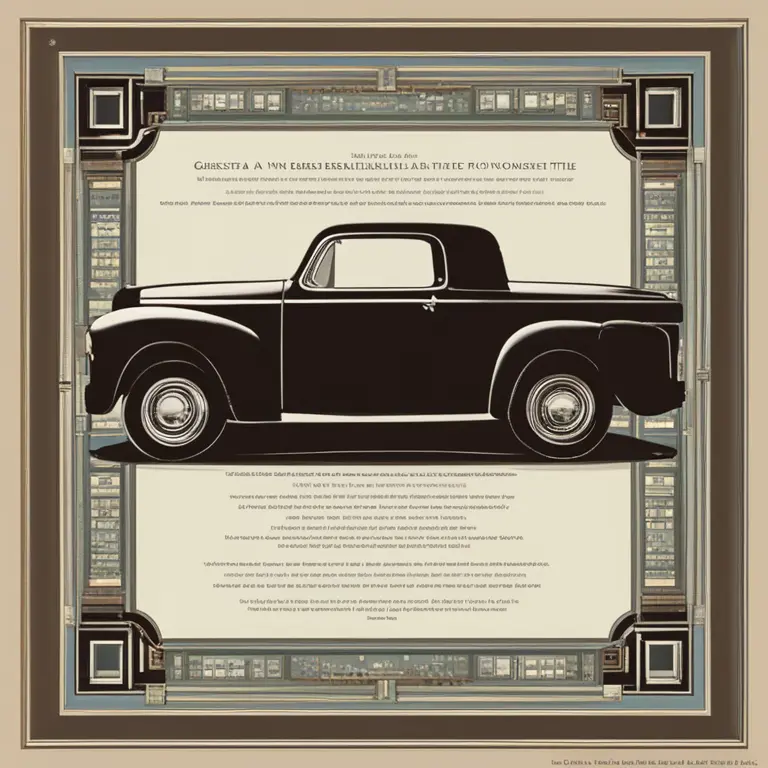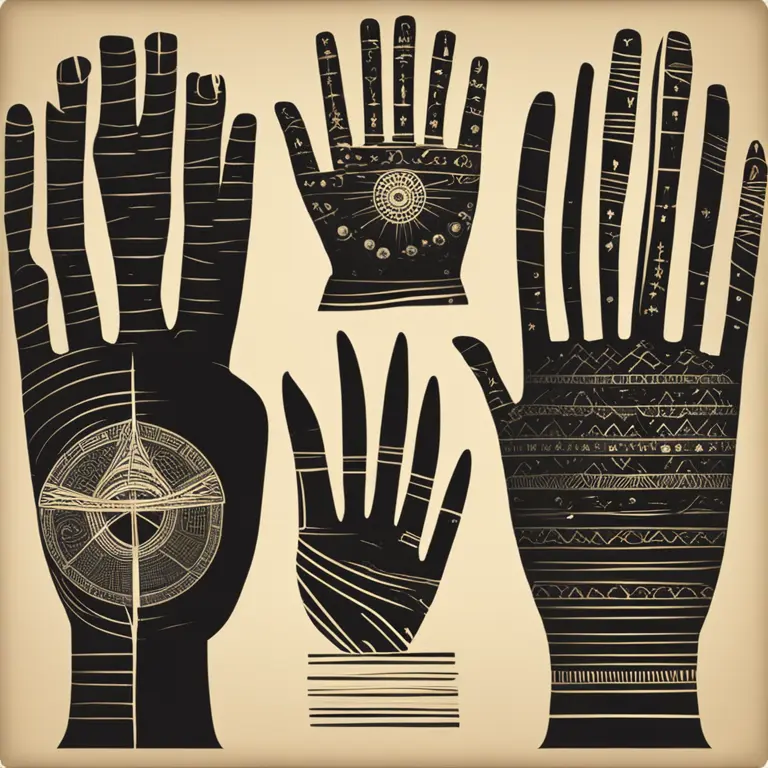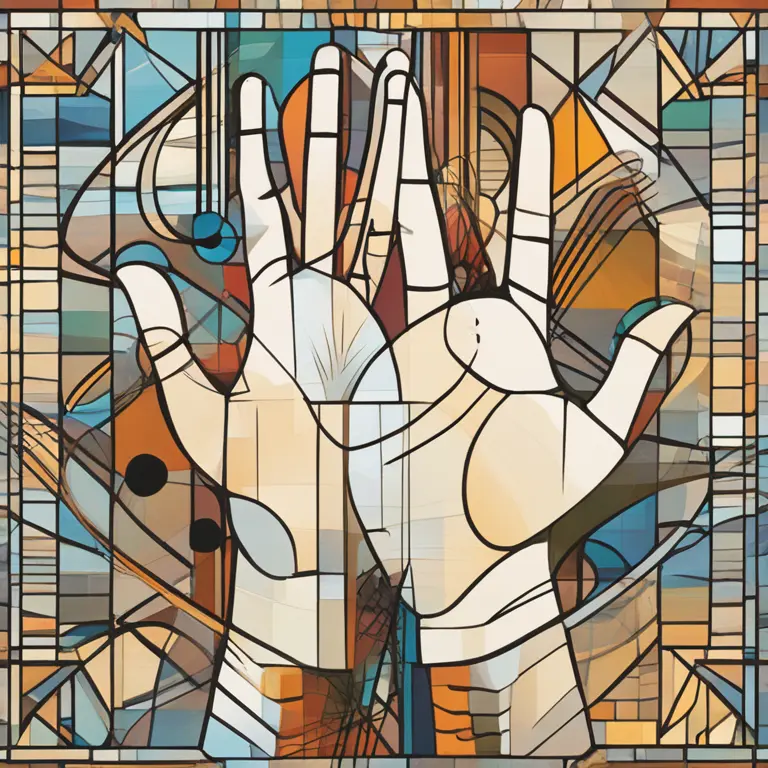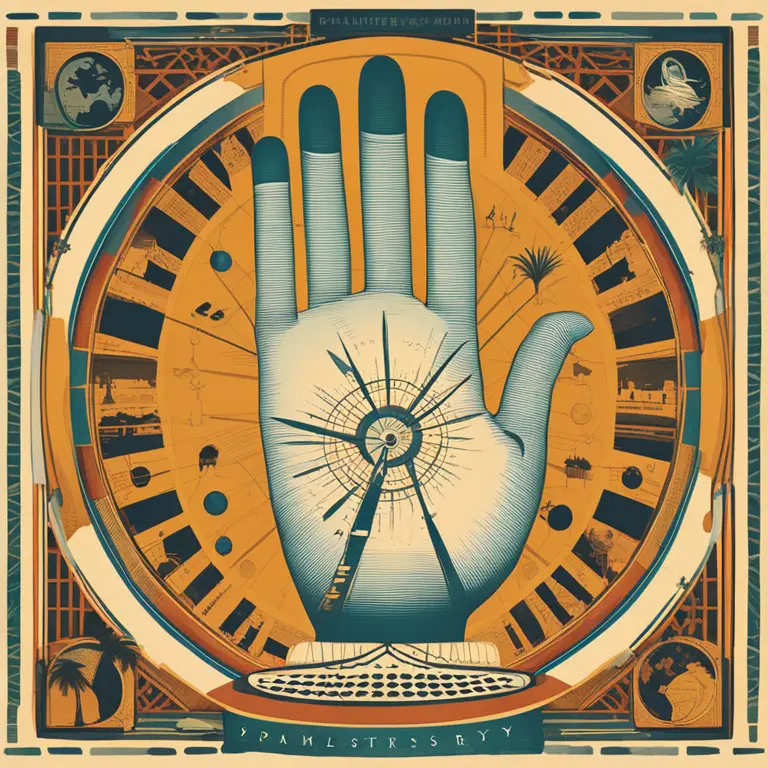
The Origins of Palmistry: A Glimpse into Hand Analysis
Delve into the historical roots of palmistry to discover who breathed first life into the art of hand analysis.
article by Nora Pennington
Ancient Beginnings
Palmistry is believed to have originated thousands of years ago, rooted in various cultural traditions across the world. While it is difficult to pinpoint a single individual who introduced palmistry, the practice itself has been referenced in ancient Indian scriptures, Chinese texts, and within the traditions of ancient Egypt. Historical accounts suggest that palmistry was used in these cultures not just for fortune-telling, but also for psychological and medical purposes, reflecting a deep engagement with the mind-body relationship. The Vedas, an ancient Sanskrit literature from India, is thought to be one of the earliest mentions of palm reading, reflecting the art's ancient roots.

Spread Through Cultures
The practice of palmistry did not remain stagnant; it traversed continents and evolved over centuries. As trade routes expanded, so too did the dissemination of knowledge, including palmistry. The Greeks contributed significantly to the spread of palmistry, with figures like Anaxagoras practicing the art. Aristotle's encounter with a palmistry manuscript, which he presented to Alexander the Great, illustrates the respect and interest given to palmistry among scholars of ancient times. This support by prominent figures helped cement palmistry’s place within the mystical and predictive arts.

Medieval Resurgence and Scepticism
During the medieval period, palmistry had a resurgence, but it also faced significant scepticism. The Christian church condemned it as a form of paganism, thus driving the practice underground. However, despite opposition, the art persisted among various occultists and travelers, often passing from one practitioner to another through secretive means. This period saw a dichotomy wherein palmistry was practiced both as a secret tradition and as a subject of scorn.

Modern Interpretations
The modern era introduced new dimensions to palmistry. Figures such as Captain Casimir Stanislas D'Arpentigny and William John Warner, also known as Cheiro, emerged as influential in the Western world's adoption of palmistry in the 19th and early 20th centuries. Their works, bringing together systematic approaches to palmistry, became seminal texts that influenced contemporary palmists. Today, palmistry is broadly categorized into two types: chiromancy, related to the lines on the palm, and chirognomy, relating to the shapes of the hands and fingers.

Scientific Scrutiny
In the contemporary world, palmistry operates at the intersection of mysticism and entertainment. While mainstream science does not back palmistry as a reliable predictor of the future or a person's character traits, it survives as a cultural artifact that fascinates many. Various psychological theories and studies have moderately supported the concept that personality traits may be reflected in physical characteristics, offering a potential bridge between scientific inquiry and palmistic tradition.
The Horizon of Palmistry
Looking towards the future, palmistry continues to adapt with the digital age. Online platforms and apps dedicated to palmistry have brought the ancient practice into the virtual realm, making it accessible to a broad audience. As holistic and alternative wellness practices gain popularity, palmistry might find itself rejuvenating once more, especially when complemented by modern psychological insights and a renewed interest in astrology and metaphysics.
Published: 1/11/2024
Modified: 1/12/2024
More predictions
Come back here soon to learn more about yourself and your future


Can Palmistry Foresee One’s Demise?
Delve into the contentious debate about whether palmistry can predict the end of life and the ethical considerations of such a claim.


Palmistry: The Historical Overview
Delve into the dawn of palmistry and trace its journey through the corridors of time, uncovering the roots of this ancient practice.


The Ancient Art of Vedic Palmistry
Discover the ancient art of Vedic Palmistry and its practice in the modern era, revealing the secrets held within the lines of the hand.